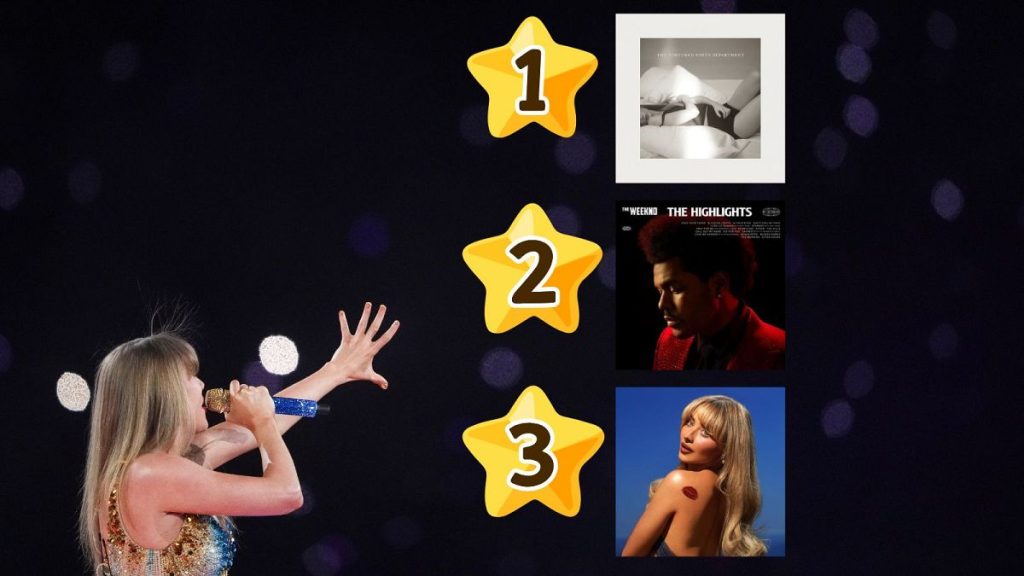The UK recorded music industry celebrated a triumphant return to form in 2024, achieving a 20-year high in sales and surpassing the previous record set in 2001. Total sales reached an impressive £2.4 billion (€2.8 billion), eclipsing the £2.2 billion (€2.6 billion) mark from two decades prior. This resurgence was fueled by a potent combination of factors, including the enduring popularity of global superstar Taylor Swift, the continued revival of vinyl records, and the ever-growing dominance of streaming services. Swift’s album, “The Tortured Poets Department,” spearheaded this success, claiming the title of the best-selling album of the year with 783,820 copies sold in the UK, a significant portion of which were vinyl records. This also solidified the album’s position as the top-selling vinyl release of 2024. While Swift dominated the album charts, Noah Kahan’s “Stick Season” reigned supreme as the year’s most popular single, achieving the equivalent of 1.99 million sales.
The resurgence of vinyl continued to be a significant driver of growth within the music industry. Sales of vinyl albums experienced a notable 10.5% increase, generating nearly £200 million (€240 million) in revenue. This contrasted with the stagnant performance of CD sales, which remained relatively flat at just over £126 million (€152 million). Despite the revenue gap, CDs still outsold vinyl in terms of units, with 10.5 million albums purchased. This highlights the ongoing debate within the industry concerning format preference and revenue generation. While vinyl’s resurgence signifies a renewed appreciation for the physical format, CDs maintain a stronghold in terms of sheer volume. This complex dynamic underscores the ongoing evolution of music consumption.
The dominance of streaming services remained undeniable, with platforms like Spotify, YouTube Music, and Amazon contributing significantly to the overall growth of the industry. Streaming revenue witnessed a 7.8% increase, exceeding £2 billion. This figure further solidifies the central role of streaming in the modern music landscape, demonstrating its power to drive revenue and shape consumption habits. However, this success story is not without its complexities. Despite the industry’s overall growth, concerns persist regarding the equitable distribution of streaming revenue to artists.
The success of established artists like Taylor Swift and Fleetwood Mac, coupled with the emergence of newer acts such as Charli XCX and Chappell Roan, further contributed to the industry’s strong performance. Both Charli XCX and Chappell Roan achieved the distinction of charting within the top 10 for both best-selling albums and best-selling vinyls. This highlights the diversity and dynamism within the music landscape, demonstrating the ability of both established and emerging artists to capture public attention and drive sales. Fleetwood Mac’s continued presence on the charts, with both a 1977 classic album and a 2018 compilation, underscores the enduring appeal of their music across generations.
Beyond the headline figures, the success of artists like Fontaines D.C. and The Cure, whose latest releases charted in the top 10 vinyl albums, points to a vibrant and diverse music scene in the UK. These artists represent a spectrum of genres, from post-punk to alternative rock, indicating a continued appetite for new music and a willingness to embrace a variety of artistic expressions. This diversity is a crucial indicator of the overall health and vibrancy of the music ecosystem.
Despite the overall positive trajectory of the music industry, underlying challenges remain. The Musicians Union highlighted the financial precarity faced by many working musicians in the UK, with almost half earning less than £14,000 (approximately €16,000) annually. This stark reality underscores the need for a more equitable distribution of revenue within the industry, particularly in the context of the booming streaming economy. While the overall industry thrives, the financial struggles faced by many artists emphasize the need for continued dialogue and action to ensure fair compensation and sustainable careers for musicians. The impressive growth of the music industry in 2024, driven by a confluence of factors from the popularity of established stars to the resurgence of vinyl, masks a deeper concern about the economic sustainability for a significant portion of working musicians. This contrast between industry growth and individual artist struggles necessitates further examination and potential restructuring of revenue models to ensure a more equitable and sustainable future for all participants in the music ecosystem.














